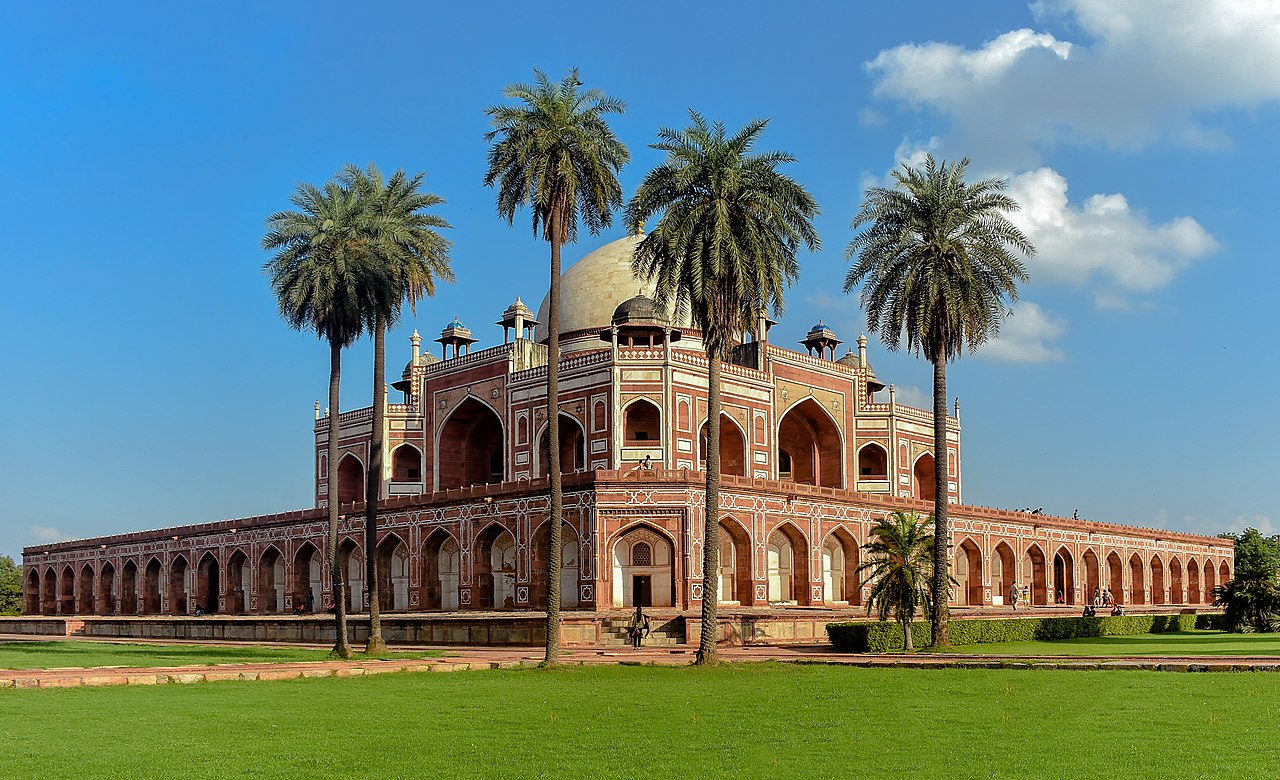
Humayún's Tomb
New Delhi, the capital of India, is a perfect example of the contrastes characteristic of the society of the Asian country. And we are not only talking about the coexistence between wealth and extreme poverty, but mainly between tradition and modernity. It is a place where you can meet a sadhus, that nomadic mystic figure, but also an executive in the financial zone of Connaught Place.
With a population of almost twenty million, New Delhi is a great bustling and lawless city. Its age is estimated at five thousand years, although with different names. This is attested by the famous Indian epic text 'Mahbharata'. However, archaeological evidence only dates back to the Mauryan era, that is, around XNUMX BC.
What to see in New Delhi
In any case, New Delhi has a wonderful monumental heritage and many other attractions, many of them in its oldest part, known as Old Delhi. We invite you to meet them.
Humayun's Tomb
This impressive ensemble of buildings constructed according to Mughal architecture is Heritage since 1993. It includes the tomb of the Emperor that gives it its name, other tombs and several mosques. Its facade is made of red sandstone with marble details and has a striking dome. The construction is symmetrical in its plan and began around the year 1579. It responds to the modality called garden tomb and, therefore, it is considered a precursor of the Taj Mahal.
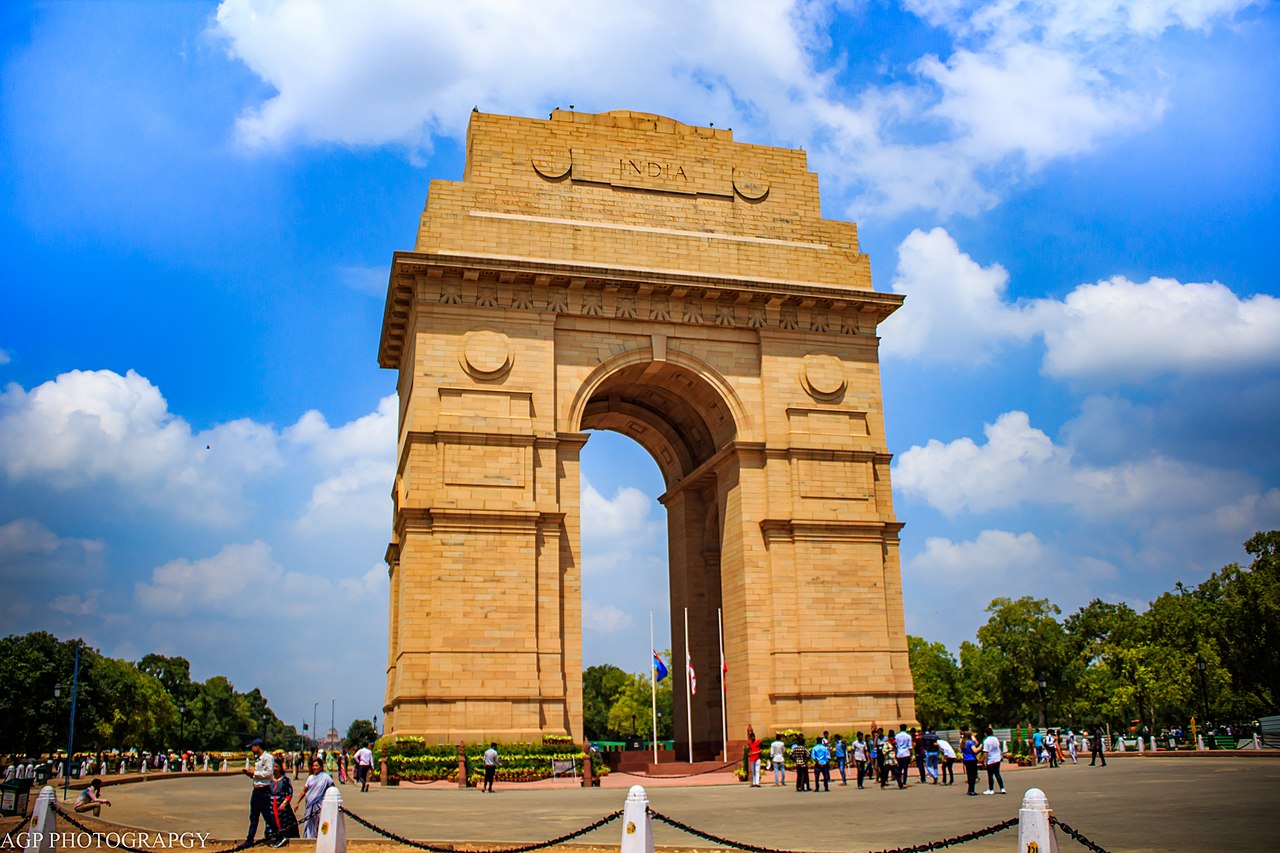
India Gate
India Gate
It is located in the wide Rajpath avenue, a street opened by the English that leads to the Presidential Palace. This is known as Rashtrapati Bhavan and it is a synthesis of European and Asian styles. It is a colossal building that you should also see.
For its part, the imposing India Gate it has a height of forty-two meters. It was built as a tribute to the native soldiers who perished during the First World War and in the so-called Afghan Wars of 1919. Both monuments are due to the architect Edwin lutyens.
Qutab Minar
You will find it in the Qutb complex, which houses the Quwwat-ul-Islam mosque, the iron pillar of the Mauryan Empire and other buildings. Qutab Minar is the minaret (mosque tower) tallest in the world at almost seventy-three meters. It was completed in 1368 and is also Heritage.
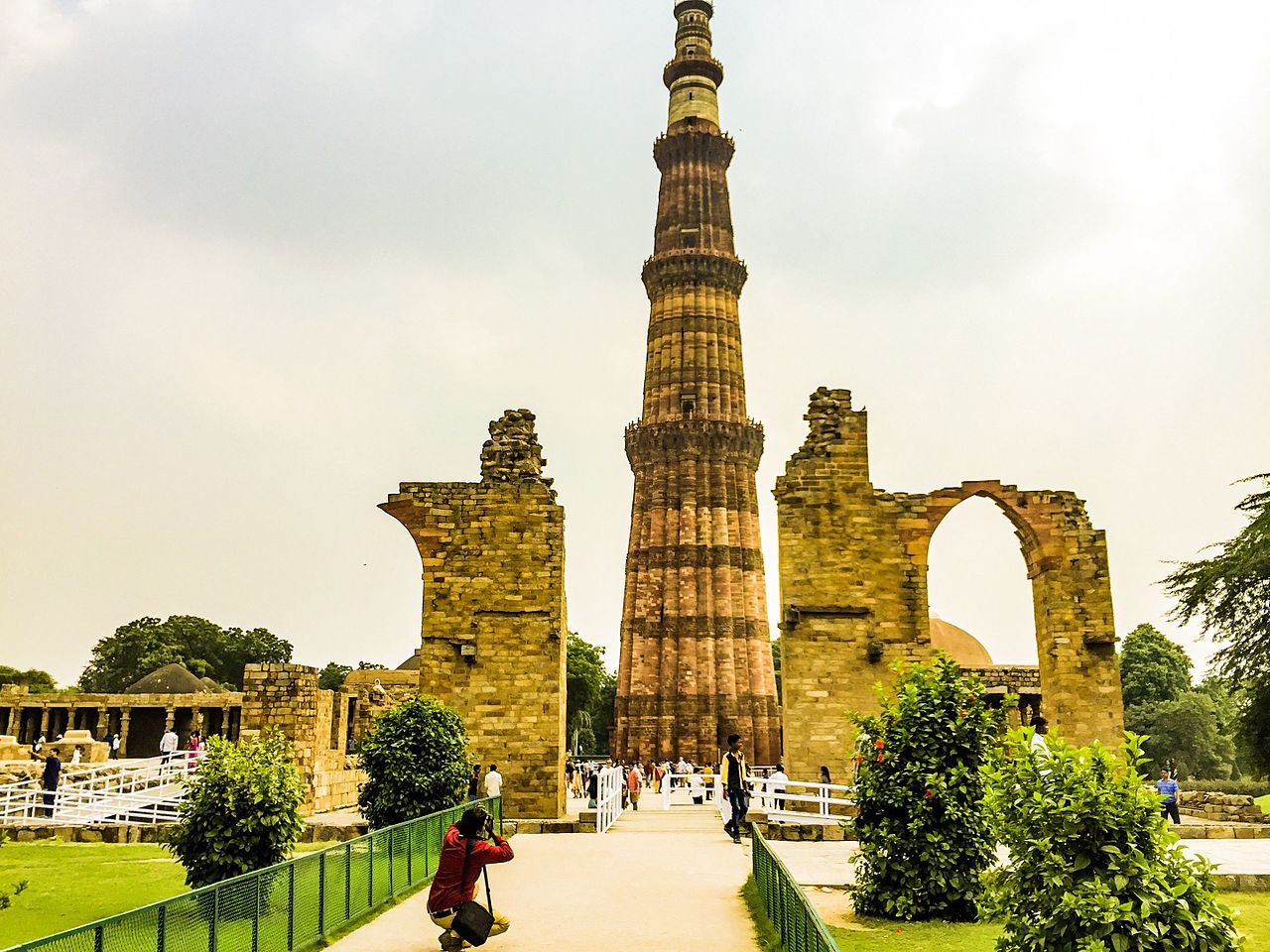
Qutub Minar
Akshardham
It is an impressive group of Hindu temples, gardens and lakes that respond to the traditional Indian style. In fact, its promoters were inspired to build it on the 'Vastu Shastra', doctrinal book that expresses the influence of natural laws in human constructions.
The monument is made of pink sandstone and Carrara marble and presents, roughly, more than two hundred fine-carved columns and nine domes. Also, twenty thousand murtis (statues of deities) adorn it and at its base you can see the Grajendra marrow, which pays tribute to elephants for their relevance in Indian culture. It contains statues of 148 pachyderms and weighs three thousand tons.
And, as you can see, everything is colossal in this monument. Even more so if you take into account that the murti dedicated to swaminarayan It is almost four meters tall.
Red Fort
No less impressive is this seventeenth-century construction with its two-and-a-half-kilometer-long wall and up to thirty-three meters high. Close the delhi old city and inside is the Palace of Mongolian Emperor Shah Jahan, who moved his capital here from Agra, where by the way there is also a Red Fort.
On the other hand, if you enter the enclosure through the Lahore gate, you will find the Chatta Chowk Market where can you buy remembrances. And once inside, look at buildings such as the House of the Drum, the Palaces of Color and of the Jewels or the gardens. And visit the Museum of the Indian Independence Movement.

Jama Masjid,
Jama Masjid,
It is one of the largest mosques in the country and was built in the XNUMXth century in red sandstone and marble. It has four towers, two minarets, three large gates and as many domes. Its dimensions will give you an idea of the fact that twenty-five thousand people can fit in your patio. The prayer room, with its marble domes and lobed arches, also stands out.
Gurdwara Bangla Sahib
Principal sikh temple from New Delhi, you will easily recognize it by its precious golden dome. Its interior is all made of marble and it has a pond surrounded by columns forming a kind of cloister. Its waters are considered medicinal and, to enter the temple, you must cover your head and take off your shoes.
Lotus temple
We return to talk about the contrasts of New Delhi to refer to this construction of 1986. Because this temple perfectly represents the modernity in the great Indian city. It is named after its appearance, which is reminiscent of a flower, and is among the candidates to become a World Heritage Site.
What to eat in New Delhi
Although Indian food is not liked by everyone, New Delhi is among the top gastronomic destinations in the world. It is a fundamental element in your kitchen, as in that of all India, the curry, which in each area presents different flavors and is present in countless dishes.
In general, the gastronomy of New Delhi is softer, less spicy, than other areas of the country. In it, the vegetables and the bread or naan, similar to pita.
Regarding the typical dishes, we will quote you in tandoori, so called because it is made in clay ovens called tandoor and which is chicken or lamb marinated with spices and yogurt. The butter chicken.
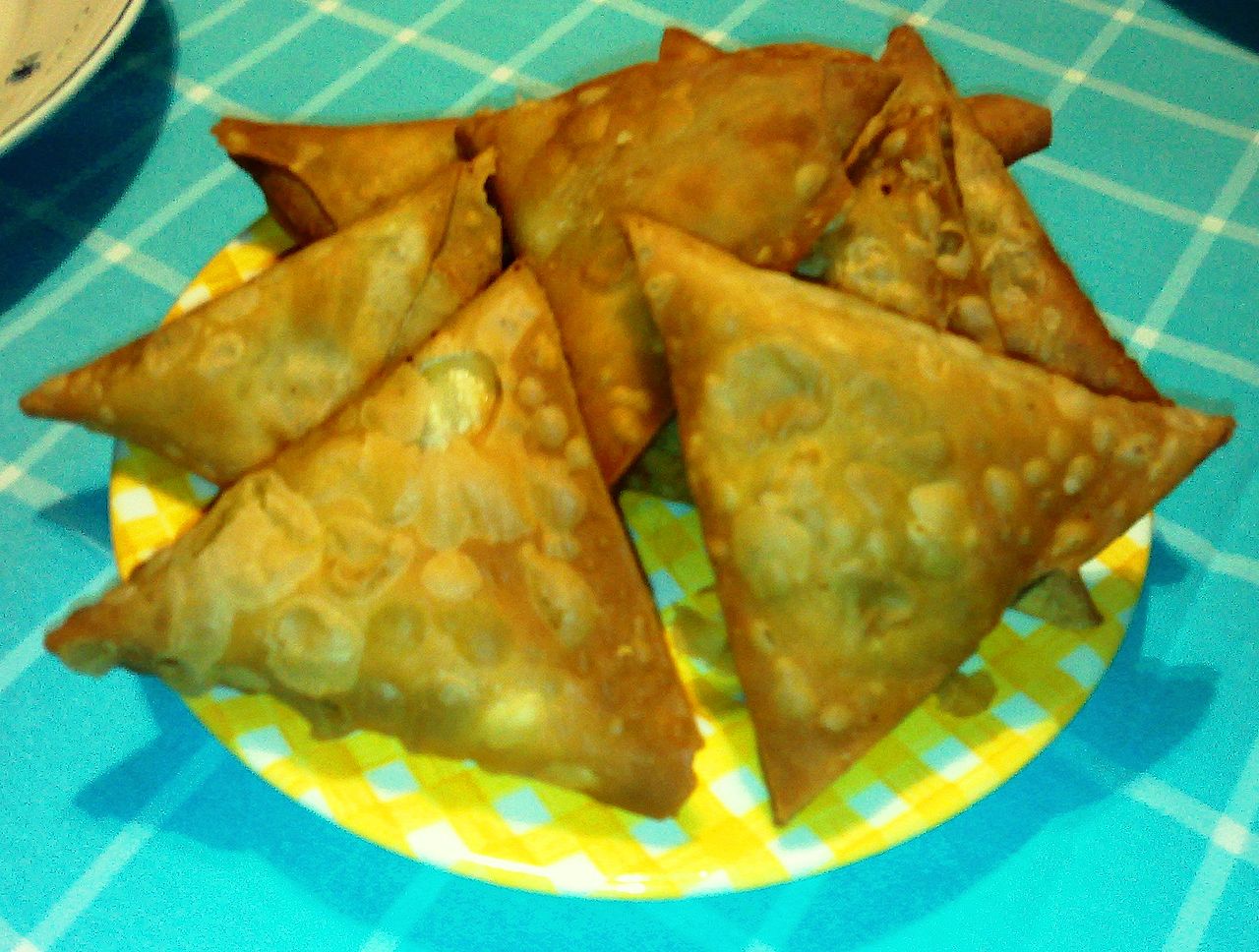
samosas
Moreover, New Delhi is full of street markets that sells samosas, some vegetable patties; Vadas, mashed potato and lentil donuts, or kebabs, well known in the West.
To eat in a group, the thali, which has rice, another of the basic ingredients of Indian cuisine, and various types of sauces. Regarding the koftaWe could tell you that they are the Indian version of meatballs and, of course, they are accompanied with curry. As for sweets, the typical jalebis, a caramelised paste. And also him kheer, similar to our rice pudding.
To drink, try the coconut water or lassi, a kind of liquid yogurt that can be sweet or salty. But the quintessential drink in New Delhi and throughout India is the. One of the most frequent is masala chai, black tea that is taken with cinnamon and milk.
What is the best time for you to visit New Delhi
The weather in the Indian capital is monsoon. Therefore, summer is not a good time for you to visit it, since it is the season of Rain (especially July and August). Plus the heat can be overwhelming.
On the other hand, winters are very pleasant, with average temperatures that do not drop below fifteen degrees, and there is hardly any rainfall. Fall is also a good time to travel to the city, but not spring, which is even hotter than summer. For all this, we recommend that you make your visit to New Delhi between the months of October and MarchInclusive.
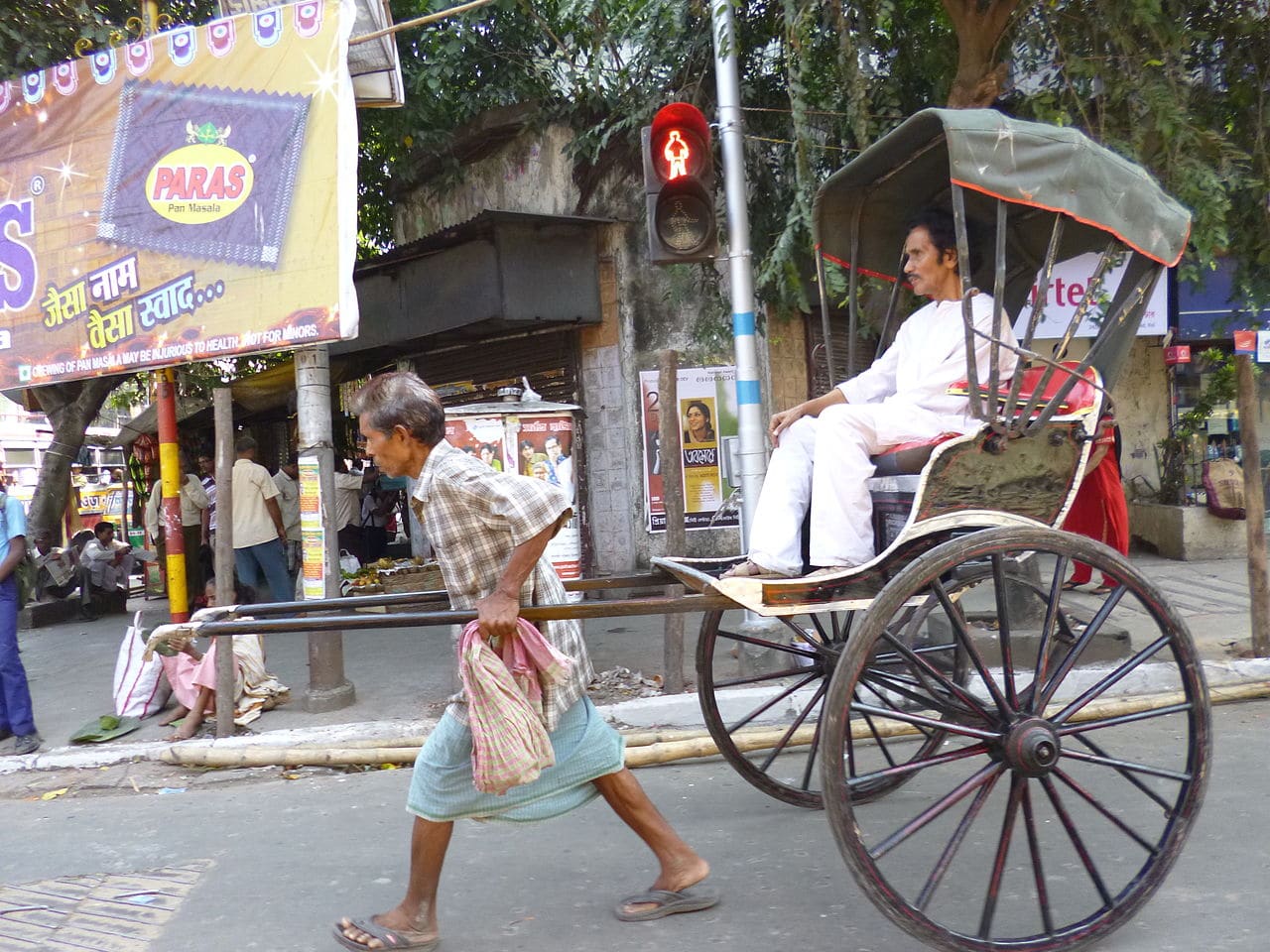
Rickshaw
How to get around New Delhi
The first thing to keep in mind is that the traffic in the Indian capital is horrible and totally lawless. Therefore, we advise you to use public transport and, within this, the best option is the subway. It has six lines that cover the tourist spots of the great city.
However, if there is a typical transport in New Delhi, it is represented by the rickshaws, those little two-wheeled carts powered by one person. We recommend that you at least try them. But be careful because they will try to charge you much more than they actually cost.
In conclusion, New Delhi is a city of great contrasts. But also a city full of monuments, with a magnificent gastronomy and that leaves no one indifferent. We invite you to visit it.